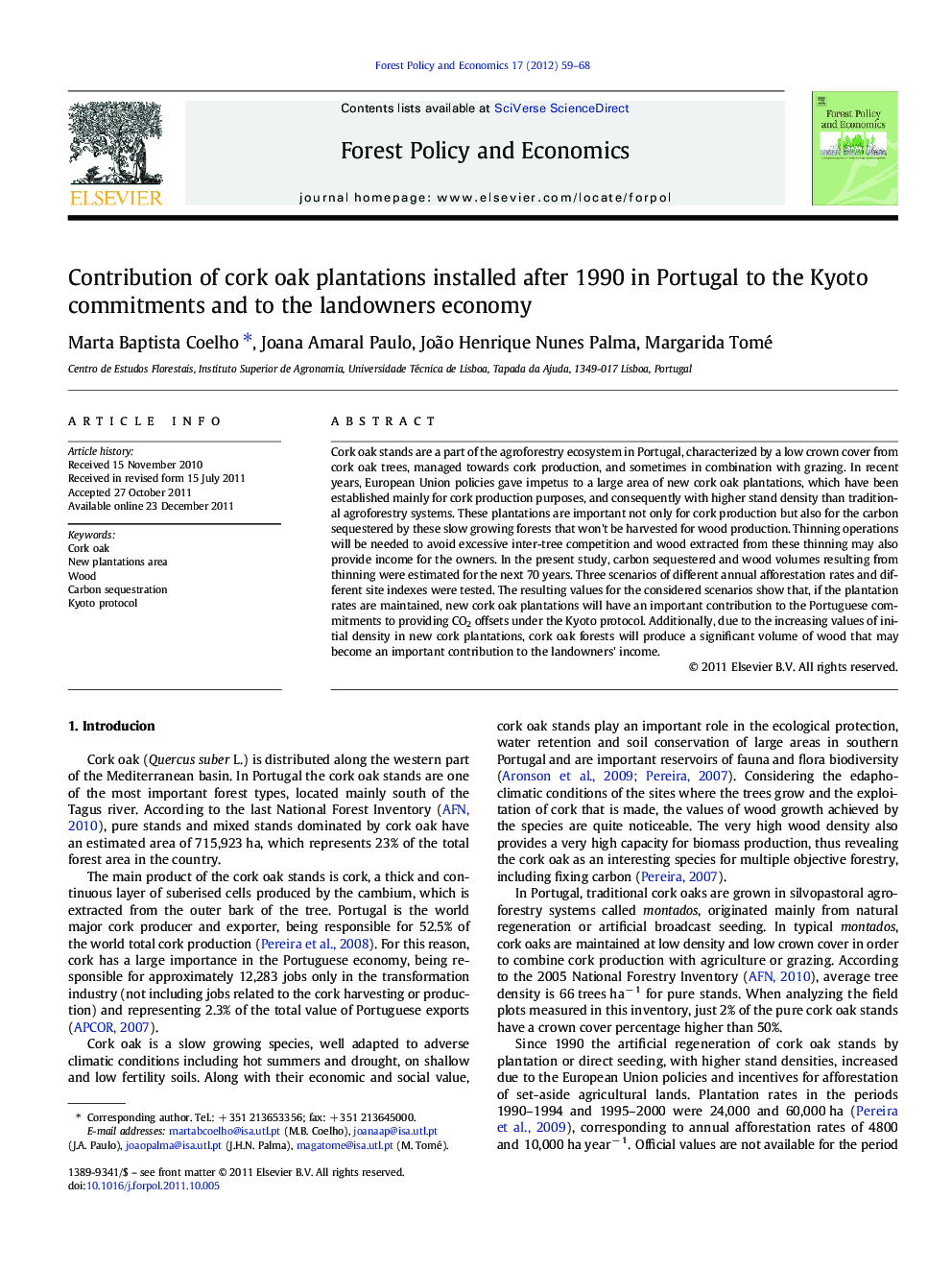| Article ID | Journal | Published Year | Pages | File Type |
|---|---|---|---|---|
| 92119 | Forest Policy and Economics | 2012 | 10 Pages |
Cork oak stands are a part of the agroforestry ecosystem in Portugal, characterized by a low crown cover from cork oak trees, managed towards cork production, and sometimes in combination with grazing. In recent years, European Union policies gave impetus to a large area of new cork oak plantations, which have been established mainly for cork production purposes, and consequently with higher stand density than traditional agroforestry systems. These plantations are important not only for cork production but also for the carbon sequestered by these slow growing forests that won't be harvested for wood production. Thinning operations will be needed to avoid excessive inter-tree competition and wood extracted from these thinning may also provide income for the owners. In the present study, carbon sequestered and wood volumes resulting from thinning were estimated for the next 70 years. Three scenarios of different annual afforestation rates and different site indexes were tested. The resulting values for the considered scenarios show that, if the plantation rates are maintained, new cork oak plantations will have an important contribution to the Portuguese commitments to providing CO2 offsets under the Kyoto protocol. Additionally, due to the increasing values of initial density in new cork plantations, cork oak forests will produce a significant volume of wood that may become an important contribution to the landowners' income.
► We aimed at analyzing the impact of new cork oak plantations after 1990 in C sequestered. ► Simulations were based on an average yield table for a site index equal to 15 m. ► The sensitivity analysis to site index suggests the need for inventory of new cork oak plantations to improve the quality of the analysis. ► The contribution of these plantations to the Portuguese commitments to Kyoto will be significant and will depend on the future plantation rates ► Wood volume from thinnings may be considered for future utilizations now starting to appear as an alternative to fuel
